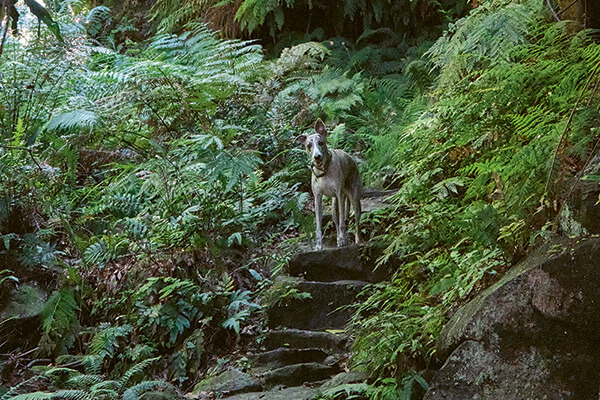
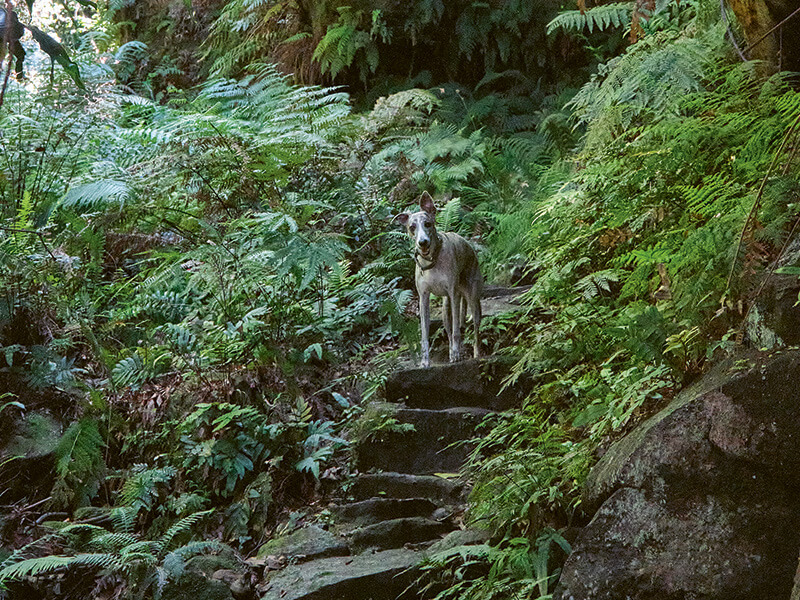
The idea that the dog is humankind’s most loyal companion is, perhaps, one of the greatest universal truths, shared among many nations and cultures.
Read on to discover three dog-friendly day trips from Dog Trip Sydney that are sure to inspire you to create unforgettable memories with your canine companion.
1. Centennial Park
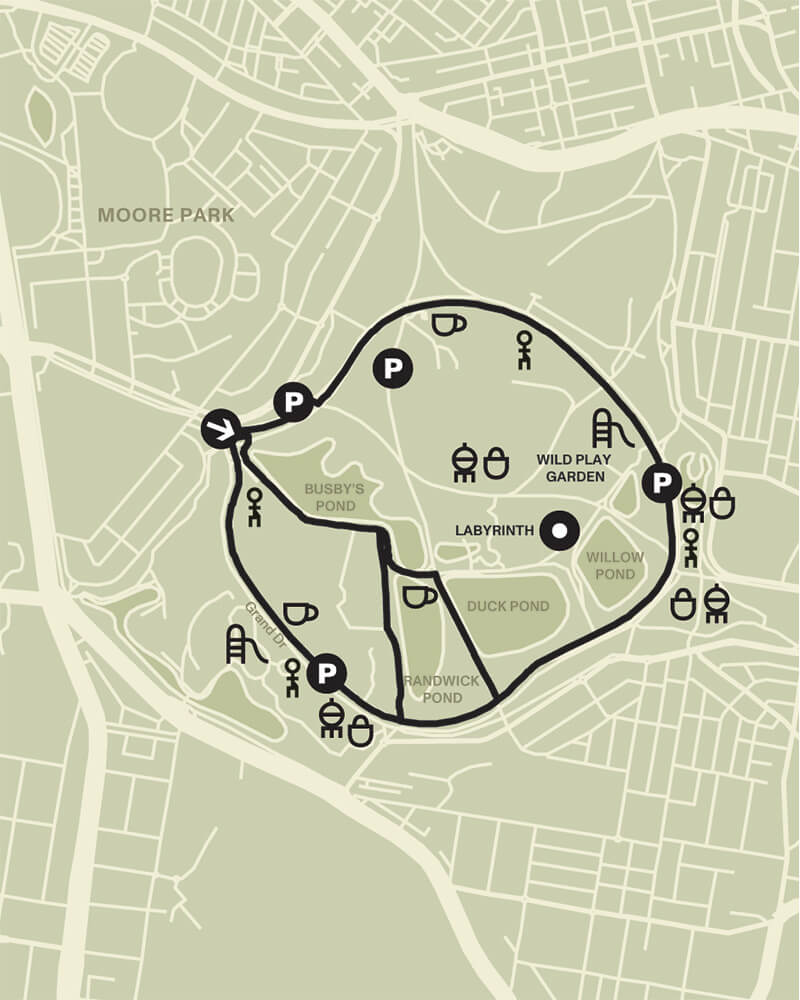
Traditional custodians
Eora
Distance from CBD
3 km
Car parking
Grand Dr, Centennial Parklands
Walk
Leash On/Off
Distance
3.5–9 km loop
Time
2 hrs
Difficulty
Easy
Climb
129 m
Facilities
BBQ
Cafe
Picnic area
Playground
Toilet
Suitable for
Children
Wheels
Often overlooked by Sydneysiders who don’t live in the Eastern Suburbs, Centennial Park is a living, breathing treasure situated within close range of the CBD. Acting as the city’s ‘green lungs’, the 189-hectare park is home to an impressive variety of native birdlife (such as black swans, superb fairy-wrens and corellas) and flora (including figs, eucalypts, paperbarks and banksias) – as well as exotic plant species like evergreen oak trees from the Southern USA and Bismarck palms from Madagascar. Typical of the grand parks established in the Victorian era, the public garden’s large expanses of lawn and grassed fields are surrounded by umbrageous Moreton Bay figs and punctuated by ponds, creating idyllic settings for daydreamers. In the dog-friendly areas of the park, joyous fur-balls are free to bound after one another off-leash.
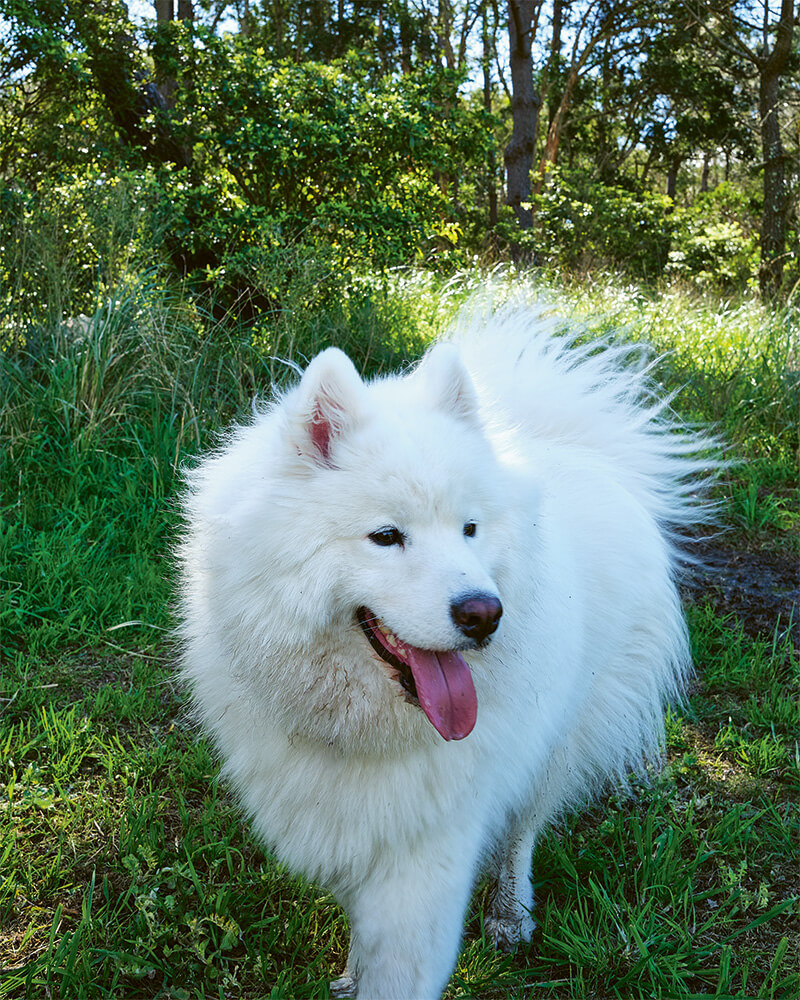
Centennial Park was officially opened in 1888 by Sir Henry Parkes – an English immigrant of humble origins turned powerful political figure and NSW premier – fulfilling his dream of creating a ‘people’s park’. Sir Henry had recruited unemployed workers to help in the construction of the park, selling land along the edge of the proposed site in order to pay their wages. Not everyone shared Parkes’s idyllic vision, however. In the 1960s, a statue of Charles Dickens was stolen from the park – it was recovered forty years later, without its head (‘Please, sir, I want my head …’).
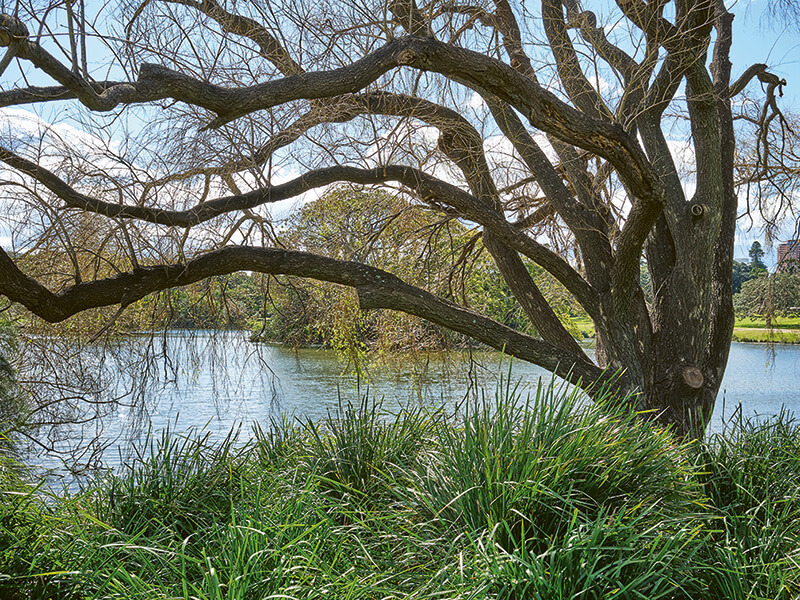
For growing bodies and minds, a romp through the elaborately named Ian Potter Children’s WILD PLAY Garden is a must-visit destination. The site is designed to encourage children to connect with nature by mixing action and education, and two-legged whelps can cavort in treehouses and frolic through water jets.
Witnessing all the people and pups enjoying this vast green space, the ghost of Sir Henry Parkes must be smiling (and, maybe, enjoying the irony of a man with his surname establishing a public park).

2. Glebe Foreshore Walk
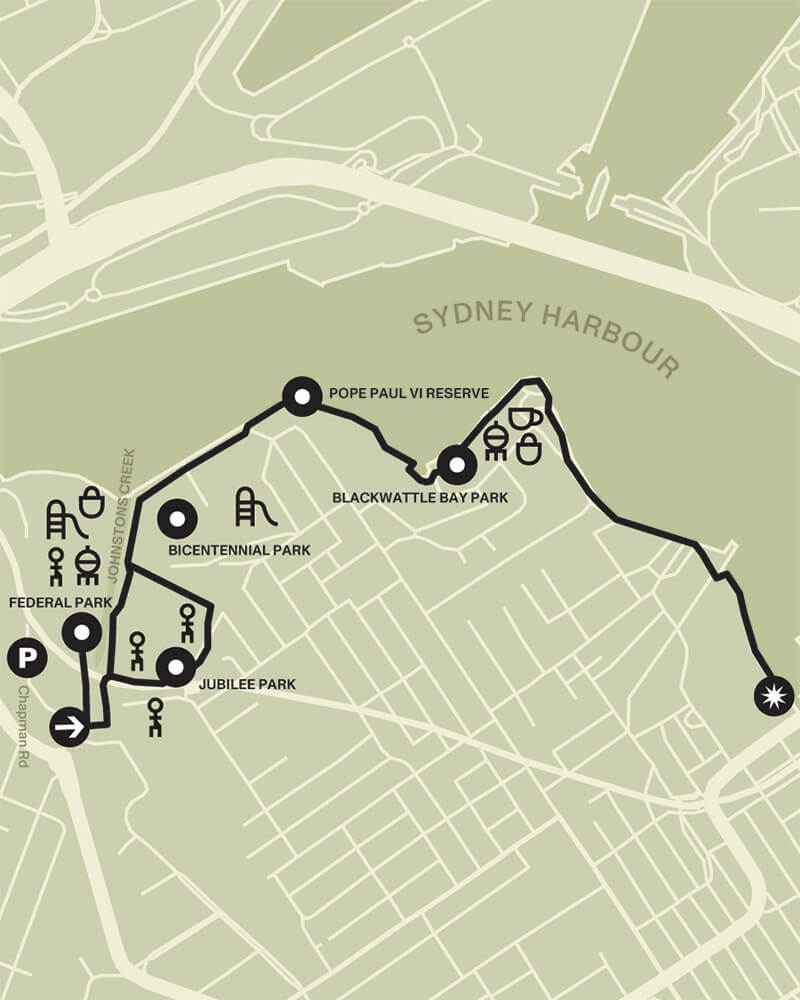
Traditional custodians
Eora
Distance from CBD
3 km
Car parking
Chapman Rd, Annandale
Walk
Leash On/Off
Distance
4.5 km return
Time
1.5 hrs
Difficulty
Easy
Climb
45 m
Facilities
BBQ
Cafe
Picnic area
Playground
Toilet
Suitable for
Children
Wheels
The Glebe Foreshore Walk links more than 27 hectares of open public space, the legacy of a four-decades-long campaign for public access that was fought and won by local residents and the Glebe Society, which was established in 1969 to support the cause. Here the urban waterfront tangles with its industrial heritage, rusty cranes and defunct power plants mingling with prime harbour views and magnificent trees.
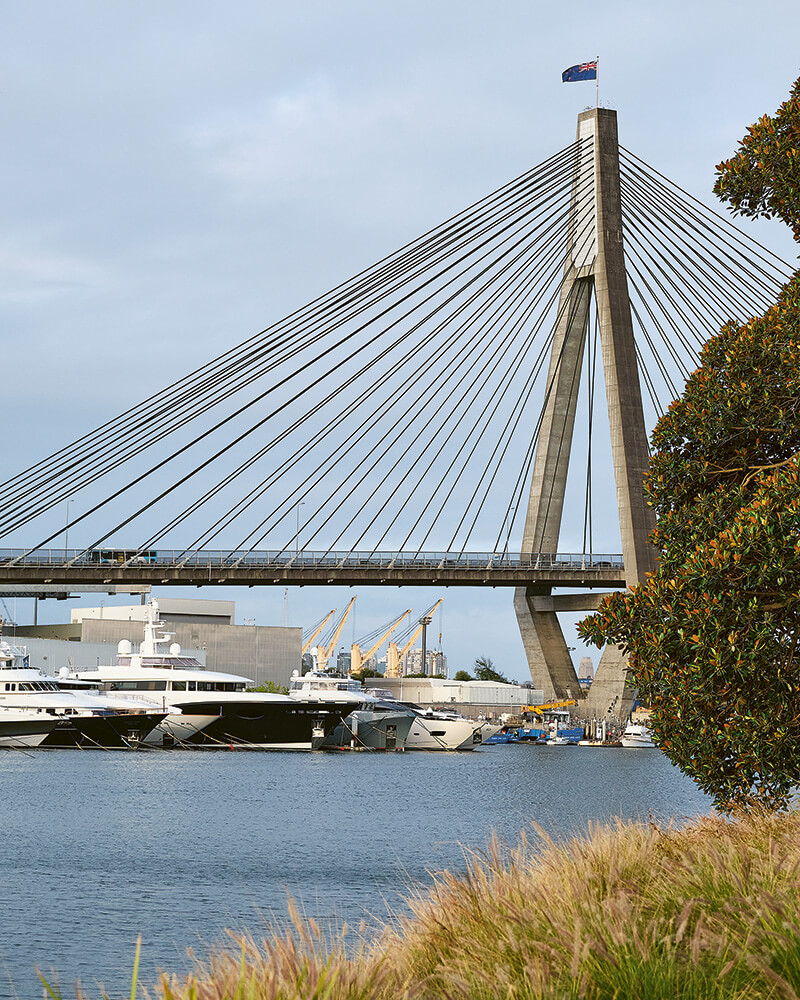
The suburb of Glebe is located on the land of the Gadigal and Wangal peoples of the Eora nation. In 1789, the colonial government granted the land to the Anglican church. Up until the 1970s the area was an industrial zone, dominated by timber yards, and modest workers’ cottages can be seen nestled between the suburb’s grand old Victorian terraces and Federation houses. The foreshore has long been used for recreation, with century-old sporting facilities for cricket, football and rowing still in use today.
The walk starts as you enter Jubilee Park, with an opportunity for off-leash activities at Federal Park, located just to the south across Johnstons Creek. Next to Federal Park lies Bicentennial Park – still featuring its original plantings of Canary Island date palms and Moreton Bay fig trees, which tower over a historic cricket pavilion and oval. There is a playground for the kids, too.
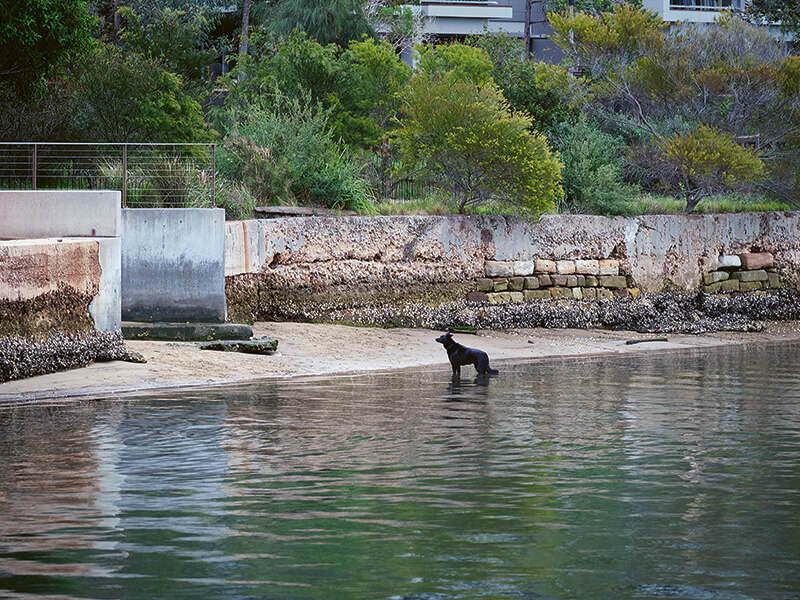
Continuing north, you end up in the eastern part of Bicentennial Park before ambling east along the Rozelle Bay foreshore. Further east along the shore is Pope Paul VI Reserve, with a divine view of Sydney’s trinity of bridges: Anzac, Glebe Island and Harbour. This reserve commemorates the first-ever papal visit to Australia in 1970. These days dogs bound about off-leash, sniffing each other with no signs of Catholic guilt whatsoever.
The next leg is Blackwattle Bay Park, which completed its transition from industrial to recreational use in 1983. Boasting picnic and barbecue facilities, it is the perfect place to spend some time. Dogs are also allowed to roam freely here. A notable relic from the past is the heritage-listed Bellevue Cottage – built in1896 and designed by the renowned architect Ambrose Thornley Jnr, who also designed the grandiose, Italianate Glebe Town Hall. Thankfully, it is now a cafe filled with sinful culinary temptations.
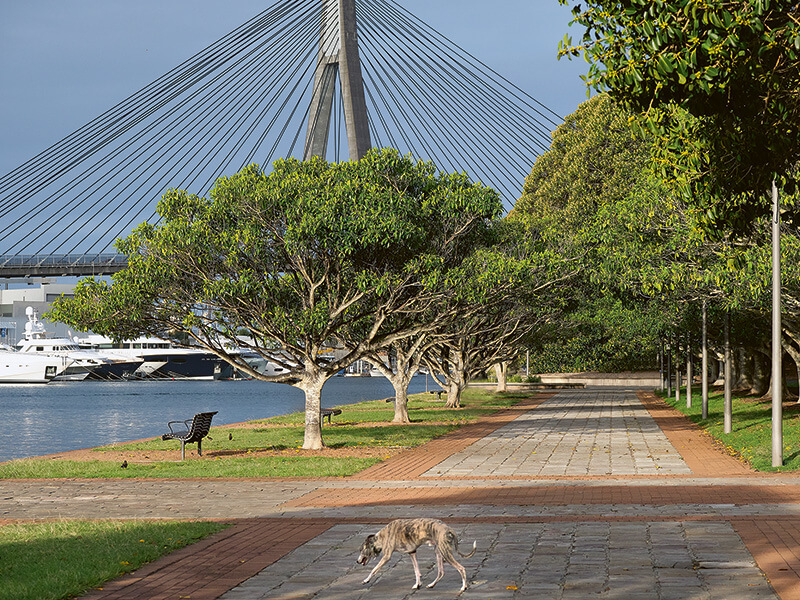
As you approach Wentworth Park, Sydney Fish Market comes into view (or smell). Stick around fora seafood feast – or take the road less travelled to Glebe Point Road for a taste of some bohemian culture
3. Cooper Park
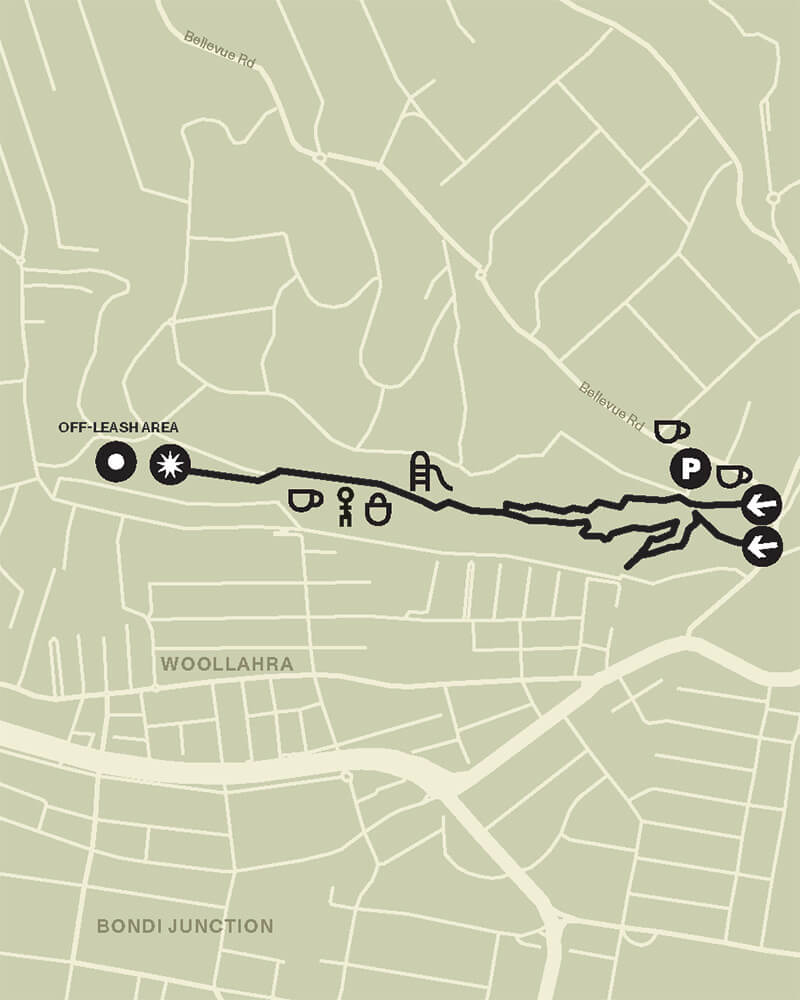
Traditional custodians
Eora
Distance from CBD
4 km
Car parking
26 Bellevue Rd, Bellevue Hill
Walk
Leash On/Off
Distance
2.5 km loop
Time
1 hr
Difficulty
Medium
Climb
43 m
Facilities
Cafe
Picnic area
Playground
Toilet
Suitable for
Children
Wheels
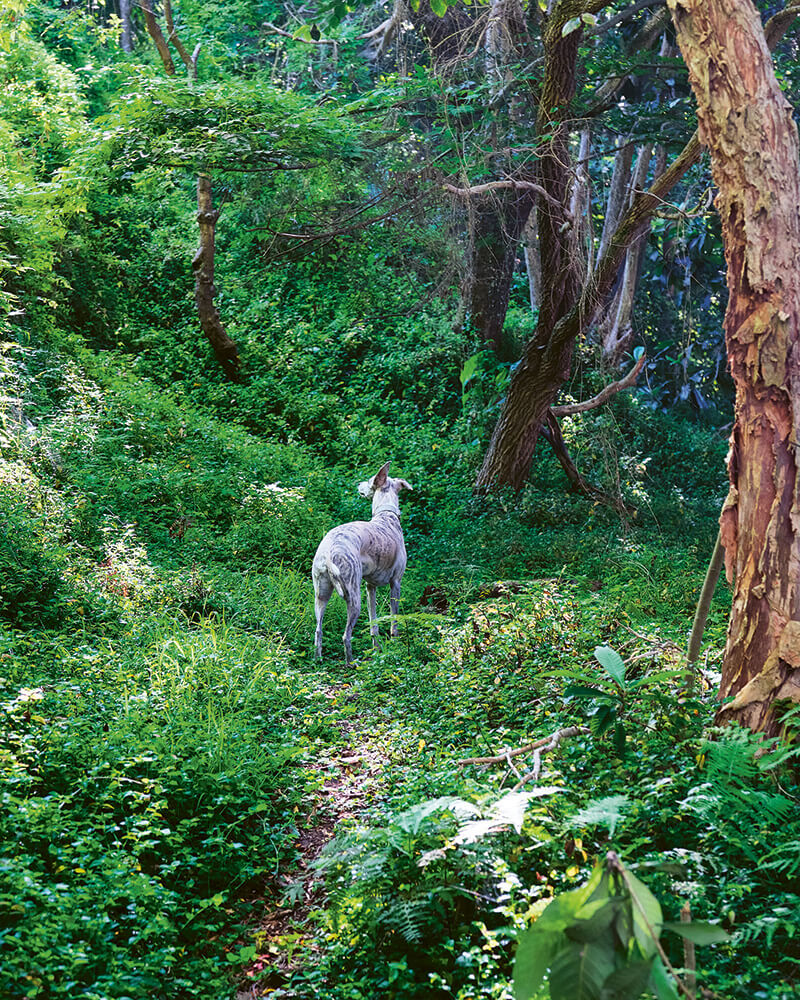
Lying within the verdant valleys and flourishing fractures of Cooper Park you will find a mix of natural wonders and layers of Indigenous and European history. As you descend vegetation-laden staircases into the steep gully that was formed by volcanic activity dating back to the Jurassic era, it’s hard to imagine that moments ago you were in the urban jungle.
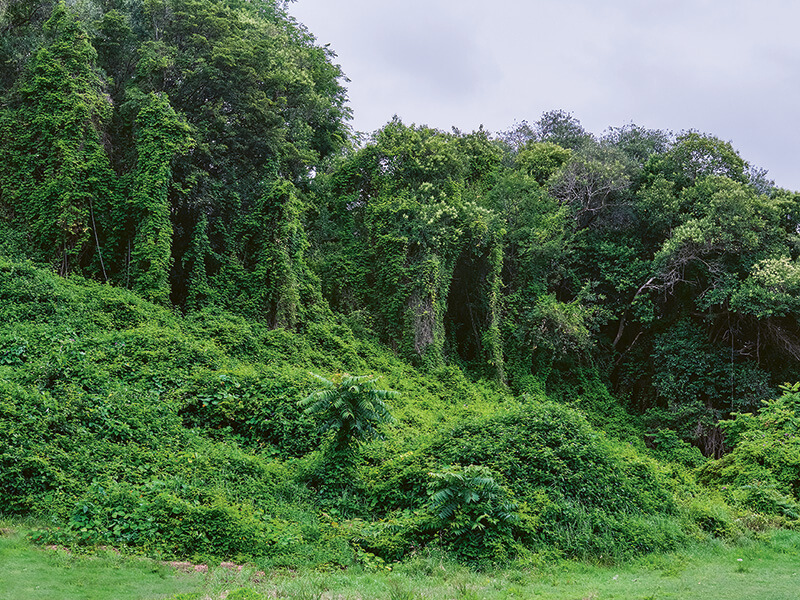
At the time of European colonisation, and for millennia before, at least two clans of the Eora nation – the Gadigal and the Birrabirragal – lived off this land, and their engravings and sacred sites are scattered around the park (the exact locations are held in confidence by the Aboriginal community). In the early 1800s, industrial baron and former convict Daniel Cooper began acquiring land in the area. In 1913, his relative, Sir William Cooper, agreed to a long standing government request to give a part of this land to the public, and it was declared a public park in 1917.
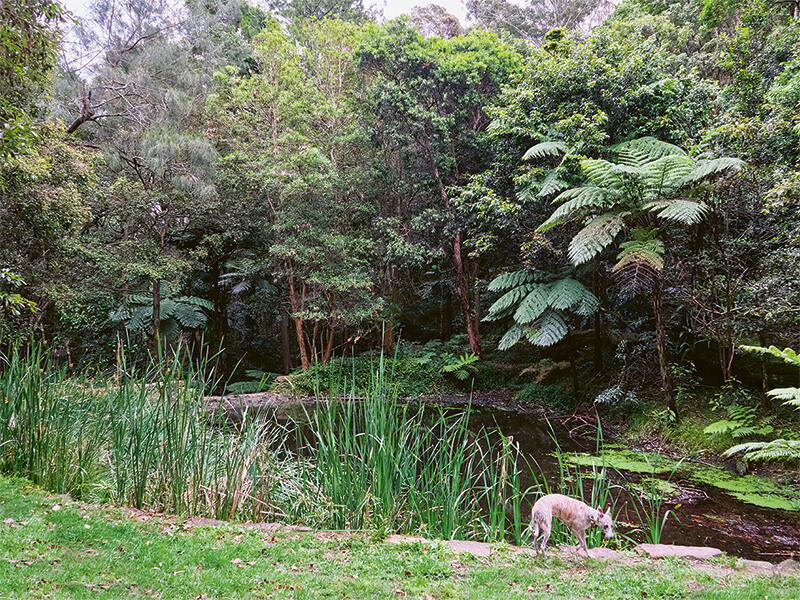
The park’s stone steps, bridges and amphitheatre were constructed in the 1930s as part of a Depression-relief work scheme. Unique stone-like grottoes pepper the park, while a kiosk, playground and tennis courts provide food and entertainment for visitors.
Walking through this 18-hectare urban greenspace, you will be bombarded with exquisite sensory experiences. The creek runs through the centre of the park, following the vein-like volcanic dyke that cuts through the ancient rock. More than 220 native plant species compete with 160 exotic ‘weed’ species. Grey gums, smooth-barked apple gums and red bloodwoods are plentiful on the ridges. In the gullies, Australian rosewoods, native figs and lilly pillies grow abundantly. Currawongs, wonga pigeons, tawny frogmouths, possums and the very local Cooper Park skink also thrive in this urban oasis. Protect them by keeping your dog on-leash in the park’s natural areas – your hound can go wild in the sportsground adjacen to Suttie Road between 4.30 pm and 8.30 am.
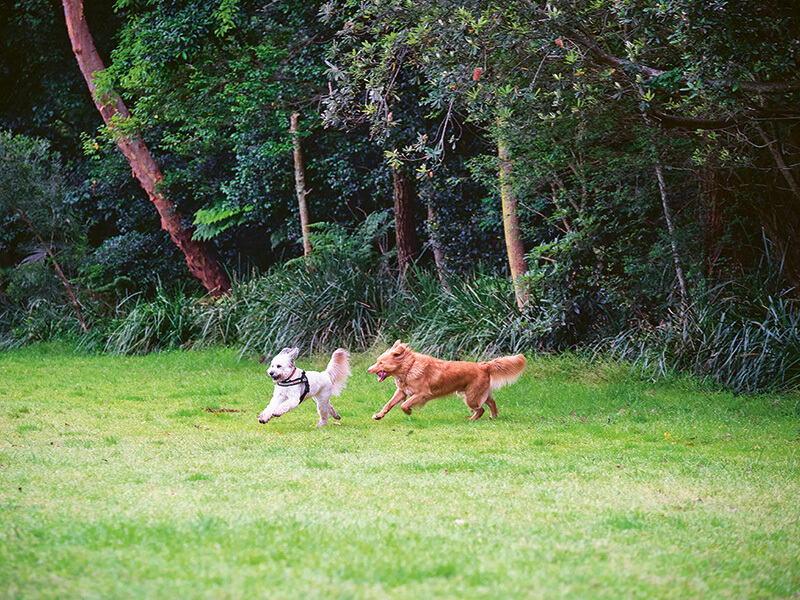
A relic of Aboriginal habitation can be found just north of Bellevue Road, in the form of an engraving of a fish in a rocky overhang. Images of a ship and male figures are engraved on a large flat rock in the north-eastern section of the park, and two charcoal figures are located on the wall of a small rock shelter between the tennis courts and residential area within the park.
The park features short trails that link to one another, so embrace being lost in this magical, timeless landscape before resurfacing.
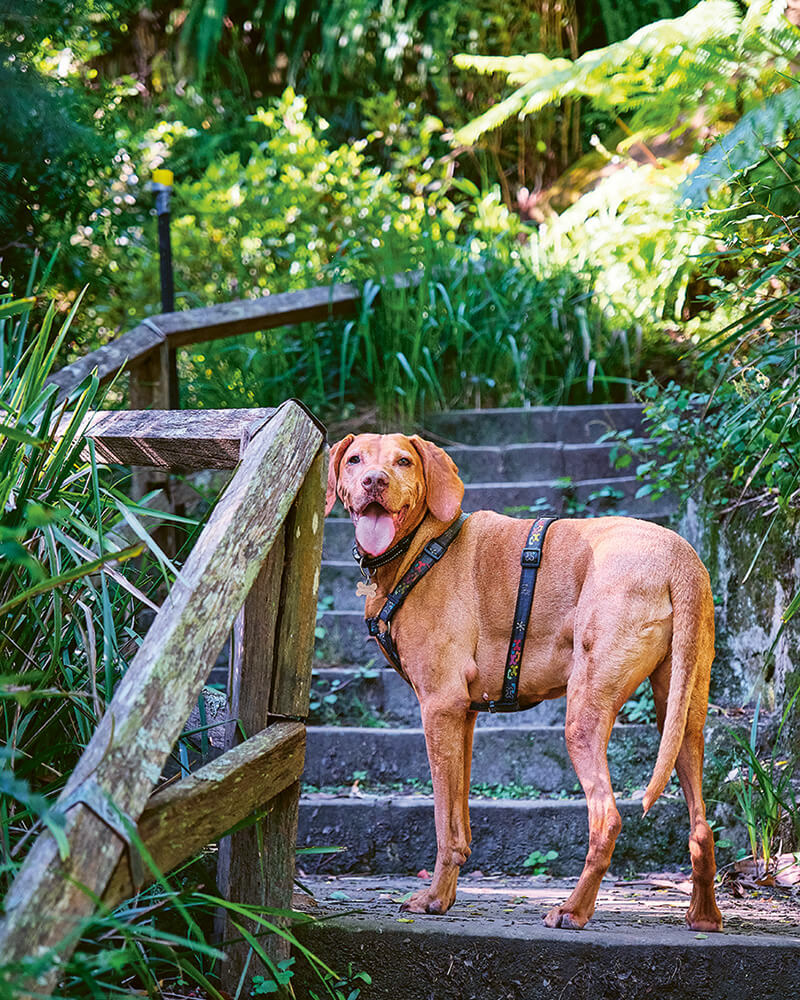
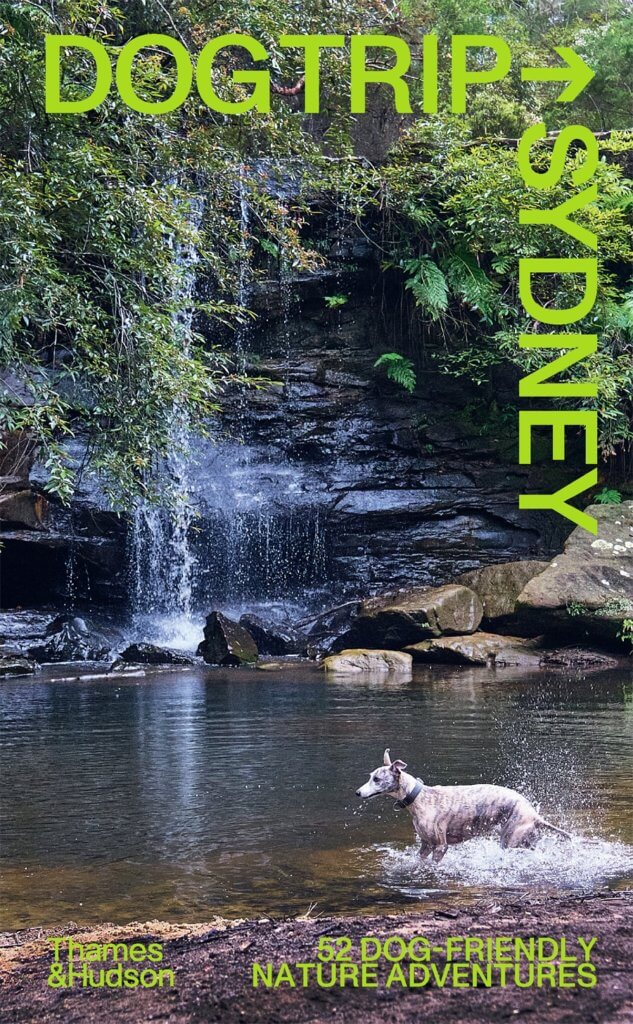
Dog Trip Sydney by Andrew Grune & Evi O is available now.
AU $34.99
Posted on November 23, 2022